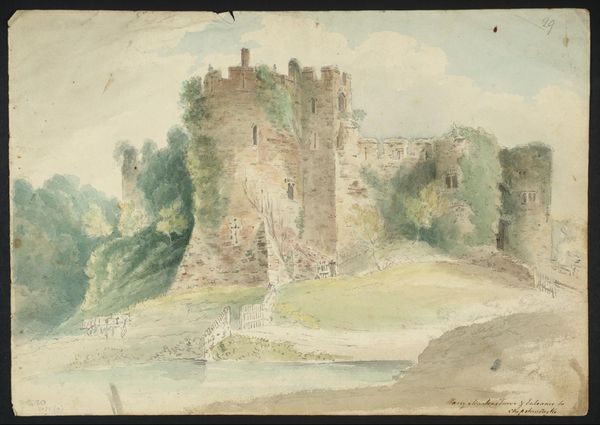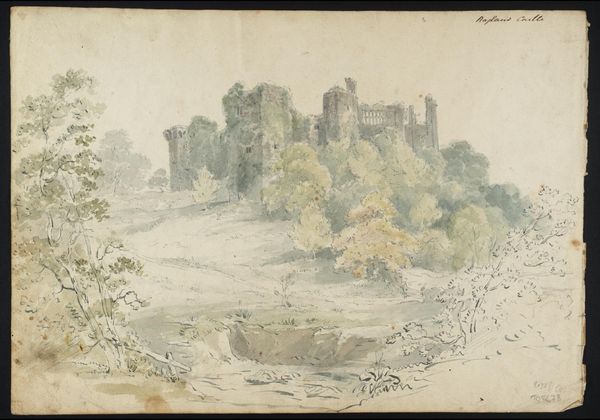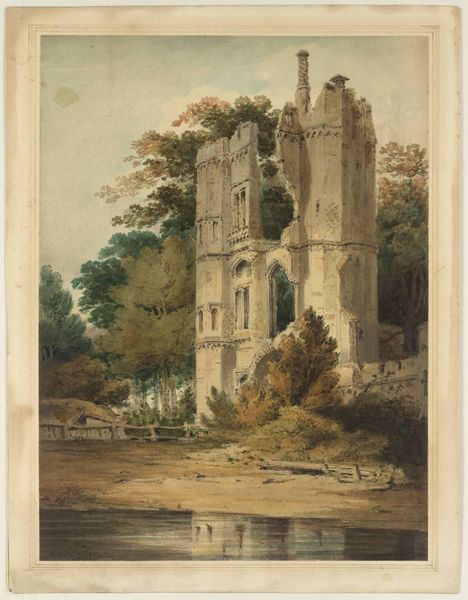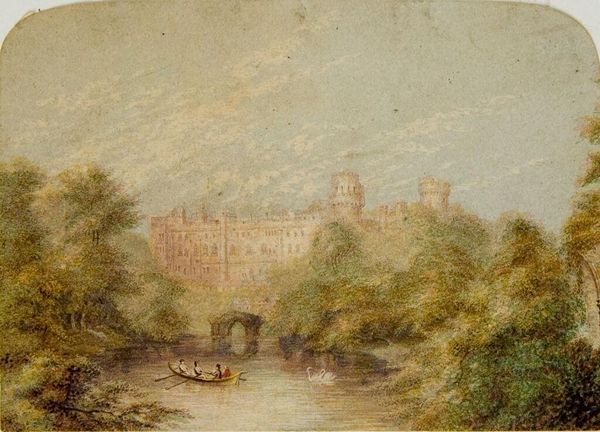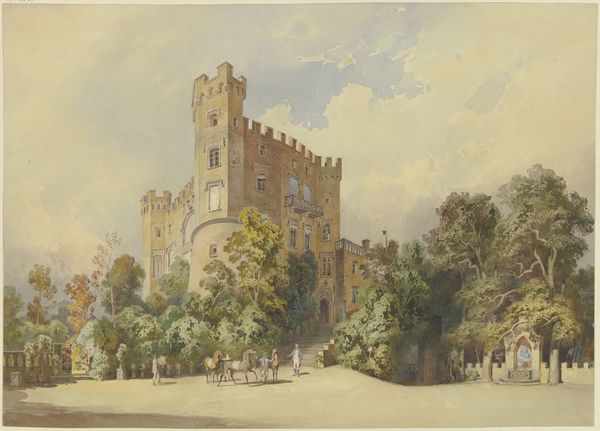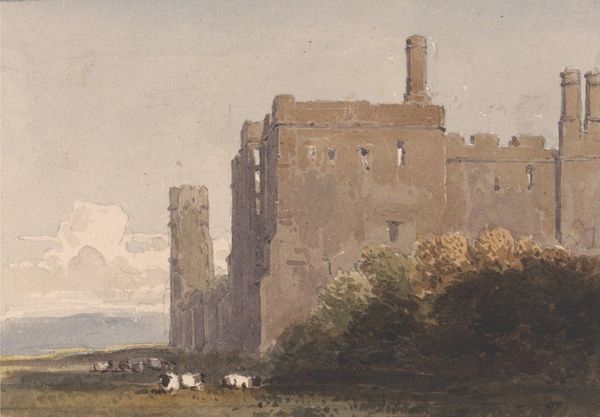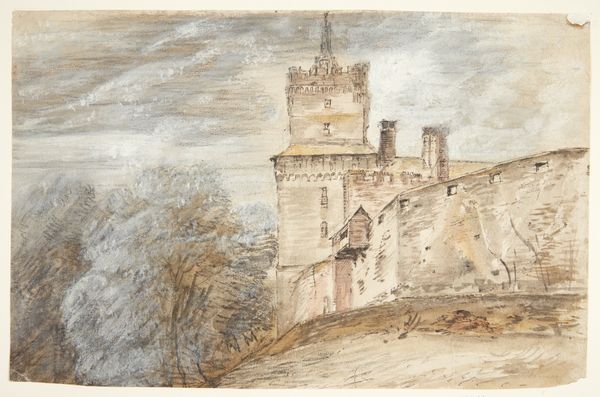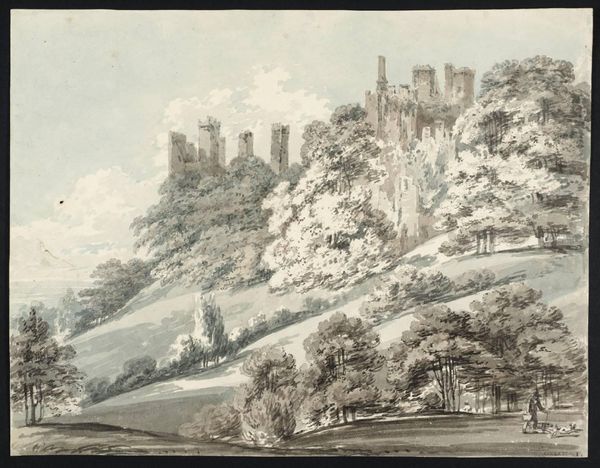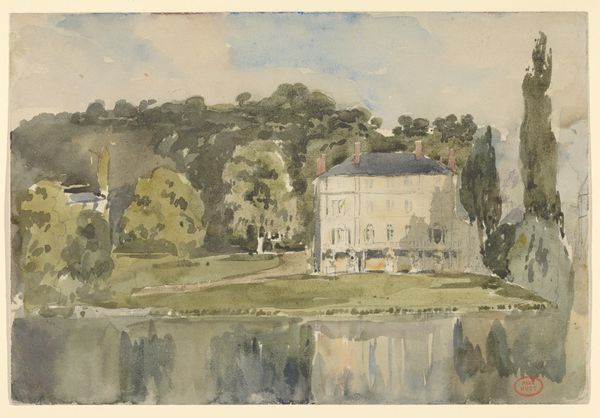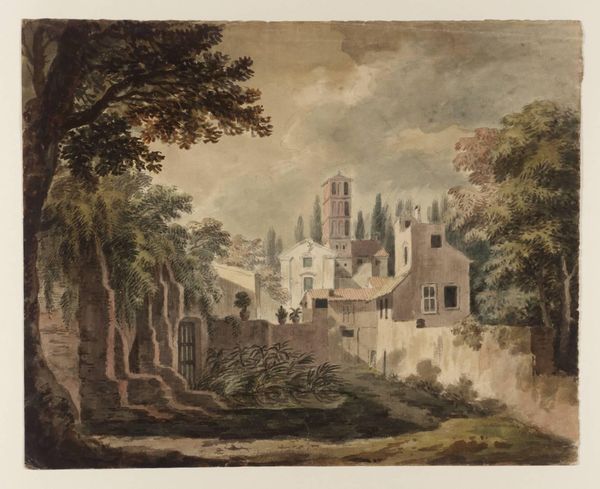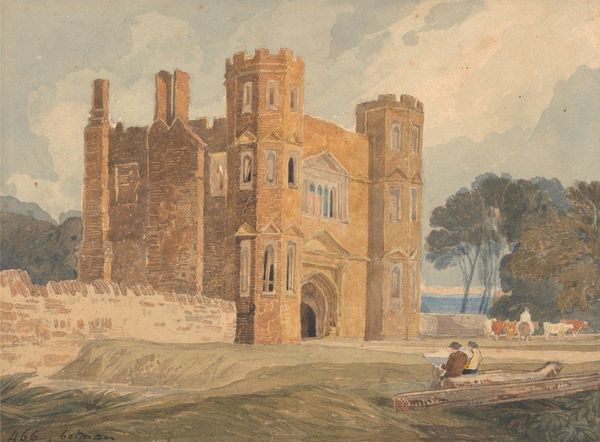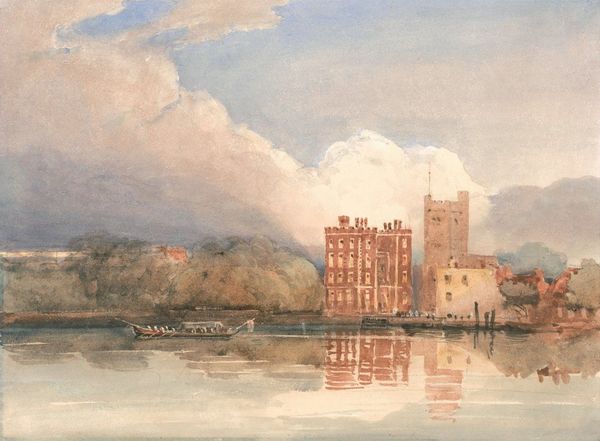
drawing, watercolor
#
drawing
#
landscape
#
watercolor
#
romanticism
#
cityscape
#
watercolour illustration
Dimensions: sheet: 14 1/4 x 10 1/4 in. (36.2 x 26 cm)
Copyright: Public Domain
Curator: This is William Callow's watercolour drawing, "Caesar's Tower, Warwick Castle," created sometime between 1845 and 1855. Editor: It's breathtaking! There's an immediate sense of tranquil beauty; the subtle tonal gradations and reflections in the water evoke a profound sense of peace, don't you think? Curator: Undeniably. Callow masterfully uses light and shadow to create depth, drawing the eye up to the imposing structure of Caesar's Tower itself. Observe how the interplay between the solid architectural form and the organic shapes of the trees lends the composition a structured yet dynamic quality. Editor: Absolutely, and while that careful contrast serves to highlight the castle as a key symbolic structure of wealth and power in the British landscape, I am interested in what's missing: people! Or, perhaps not missing entirely - see how that working-class figure is quietly framed in the lower-right? Her positionality emphasizes not only class divisions, but the castle's implication in those divisions, as well. What is framed as tranquil beauty for some is a space where others perform unpaid labor, if you notice her bucket, she's likely washing clothes at the water's edge! Curator: That's a compelling reading, given that period's prevailing social dynamics. However, I would argue that even this figure is thoughtfully rendered. Consider her placement - her relative distance adds scale to the overall landscape. She also serves as a formal device: a carefully positioned element within the artist's total design that provides viewers with a point of connection. Editor: True. But it still begs the question of visibility and whose stories are deemed worthy to be recorded! We also need to ask ourselves, for whom are these idyllic images created? Whose experiences do they amplify, and conversely, whose do they omit? The romantic era in Britain was marked by the rise of the landed gentry: beautiful depictions such as this offered a nostalgic vision of society during that era. Curator: Nonetheless, regardless of whatever omissions it presents, Callow's skilled handling of watercolour should not be dismissed! Editor: Agreed! The artist has undeniably created a visual dialogue about power, labour, and class structures within this singular scene. Curator: And the composition provides ample avenues for future structural study. Editor: A poignant meditation for reflection on beauty and history!
Comments
No comments
Be the first to comment and join the conversation on the ultimate creative platform.
